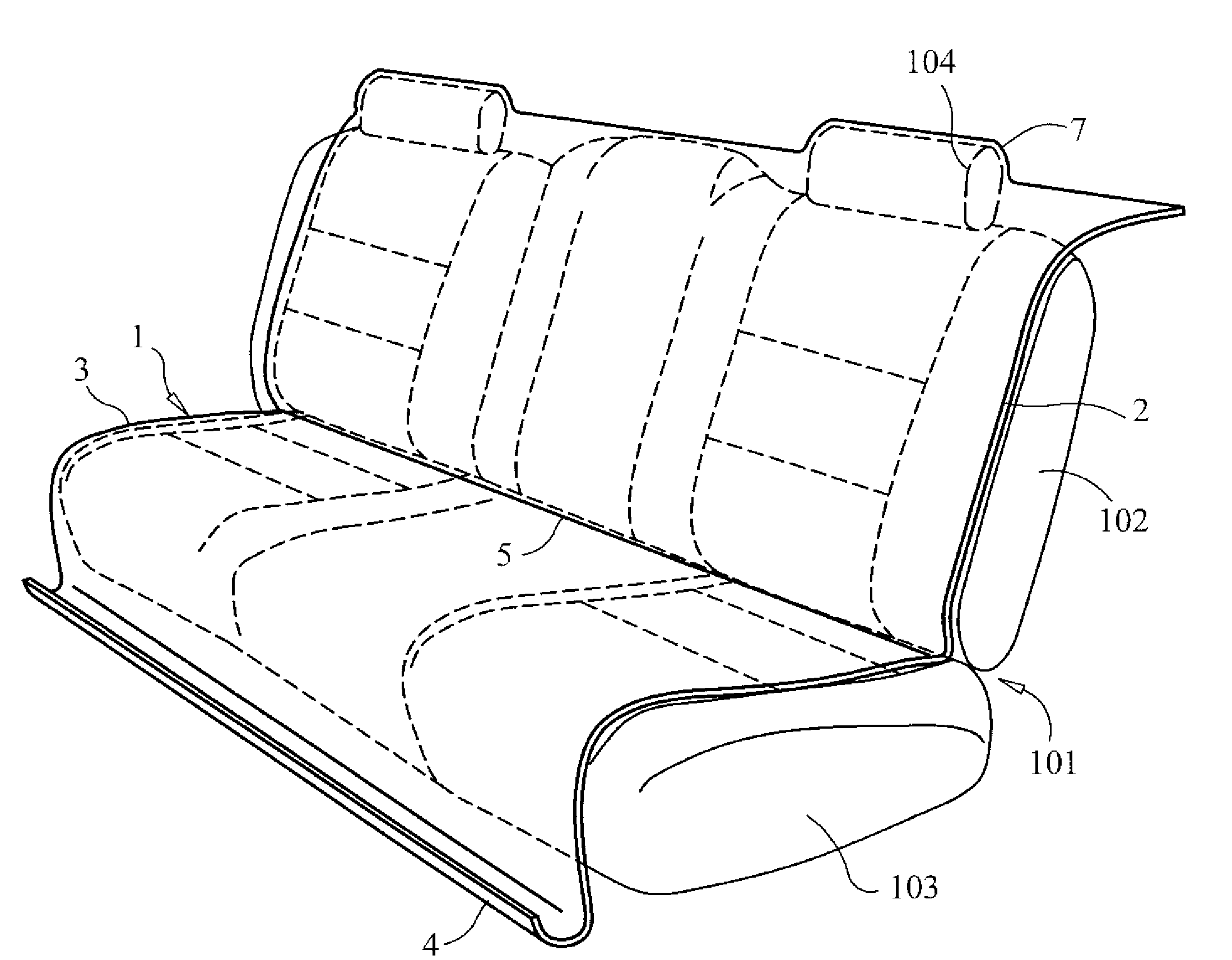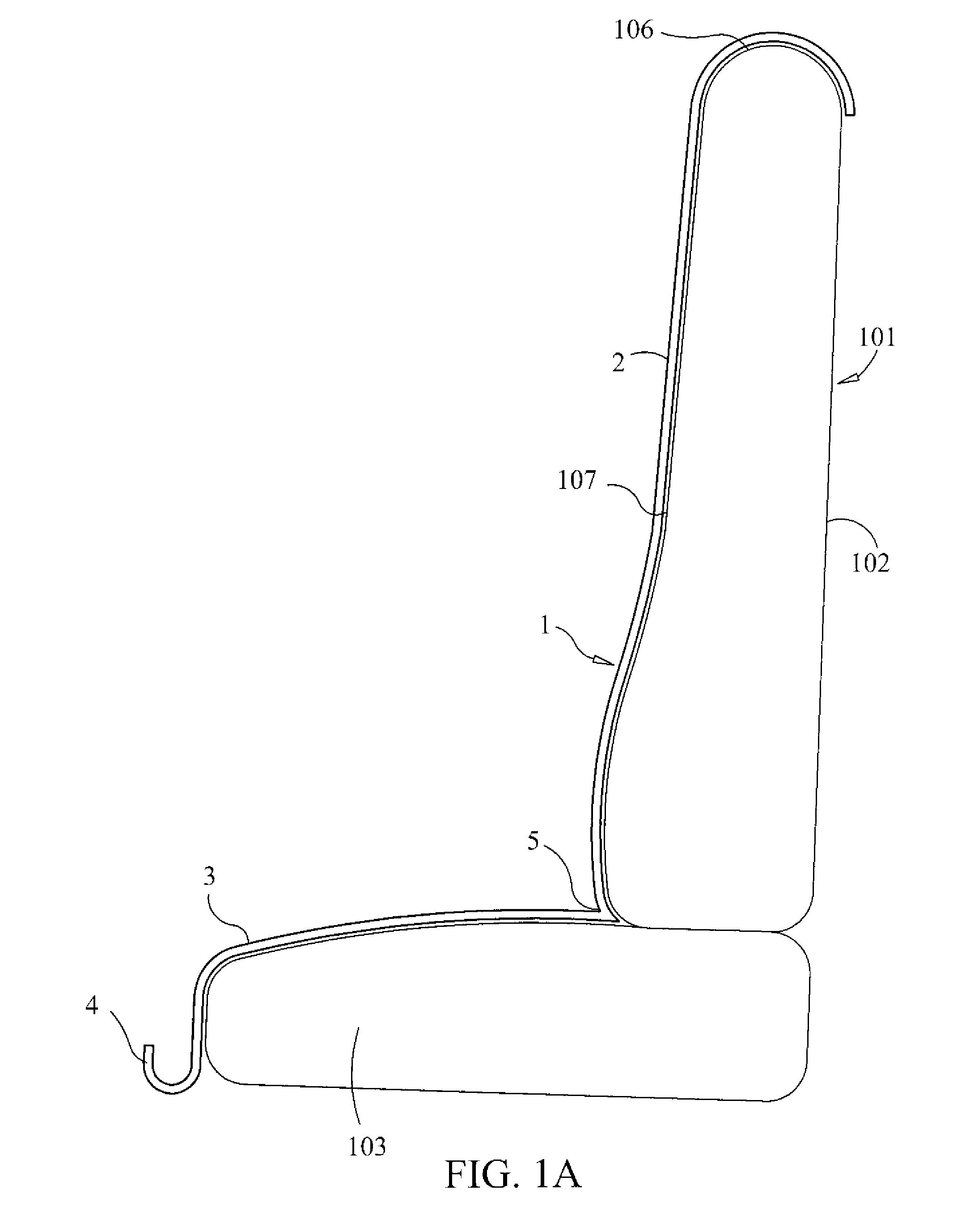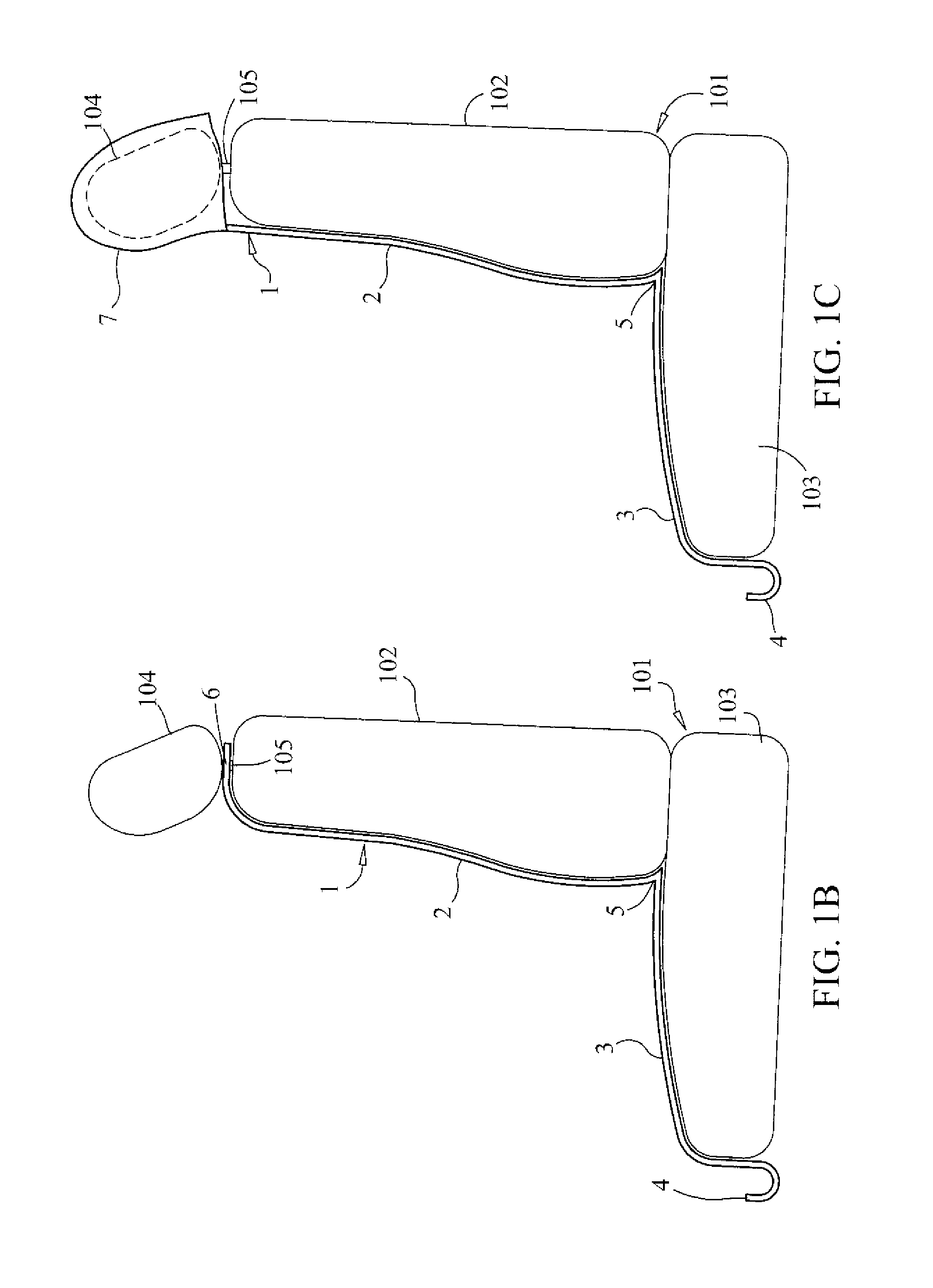Mat Made of Flexible, Closed-Cell, Expanded Thermoplastic for Protecting a Car Seat from Pets
a technology of expanded thermoplastic and car seats, which is applied in the direction of chairs, transportation and packaging, vehicle arrangements, etc., can solve the problems of easy and permanent damage of leather seats, fragile leather seats, and the most expensive option in most cars, and achieve the effect of easy removal
- Summary
- Abstract
- Description
- Claims
- Application Information
AI Technical Summary
Benefits of technology
Problems solved by technology
Method used
Image
Examples
first embodiment
[0045]FIGS. 1A and 3 show the mat 1 that rests on a top 106 of the seat back 102. In this embodiment, the mat 1 is draped over the top 106 of the backrest 102. The back portion lies on the top 106 and reaches the rear 107 of the backrest. By being draped over the backrest 102, the back portion 2 is held on the backrest 102 and therefore the entire mat 1 is held on the seat 101.
second embodiment
[0046]FIGS. 1E and 6 show the mat 1 that is held on the seat 101 by a headrest 104. The back portion 2 has four holes 6 made in it, if the seat 101 has a middle headrest, which is not shown, the back portion 2 can include six holes 6. The headrest 104 has headrest posts 105 that insert in the backrest 102. To install the headrest 104, the headrest 104 is removed from the backrest 102. The headrest 104 is then reinserted by threading the headrest posts 105 through a hole 6. The mat 1 is thereby held on the seat 101.
[0047]FIG. 7 shows an embodiment of the back portion 2 also having holes 6 for receiving headrest posts 105 of the headrest 104. Slits 8 run from the holes 6 to the edge of the back portion 2. The slits 8 allow for easy and quick insertion of the headrest 104 into the holes 6 without needing to remove the headrest 104 from the backrest 102. Once inserted, the headrest posts 105 are held in the holes because the resilient nature of the mat 1 tends to close the slits 8.
third embodiment
[0048]FIGS. 1C and 2 show the mat 1. In this embodiment, a hood 7 is connected to the top of the back portion 2. The hood 7 fits over the headrest 104. Preferably, the hood 7 holds the headrest 104. The hood 7 holds the mat 1 on the seat 101 and can be easily removed from the headrest 104.
[0049]FIG. 5 shows an embodiment with a back portion 2 that covers only a portion of the backrest 2. Even though the backrest 2 is only partially covered, the frictional qualities of the PVC on the leather leg rest 103 are enough to hold the mat 1 on the seat 101.
[0050]The mat 1 includes a cuff 4 along the forward edge of the leg rest 103. The cuff 4 catches debris from the pet such as fur, dirt, and the like.
[0051]When not in use, the mat 1 can be rolled into a coil. The coil can be easily stowed in a vehicle's trunk for subsequent deployment. The coiled mat 1 is shown in FIG. 4.
PUM
 Login to View More
Login to View More Abstract
Description
Claims
Application Information
 Login to View More
Login to View More - R&D
- Intellectual Property
- Life Sciences
- Materials
- Tech Scout
- Unparalleled Data Quality
- Higher Quality Content
- 60% Fewer Hallucinations
Browse by: Latest US Patents, China's latest patents, Technical Efficacy Thesaurus, Application Domain, Technology Topic, Popular Technical Reports.
© 2025 PatSnap. All rights reserved.Legal|Privacy policy|Modern Slavery Act Transparency Statement|Sitemap|About US| Contact US: help@patsnap.com



